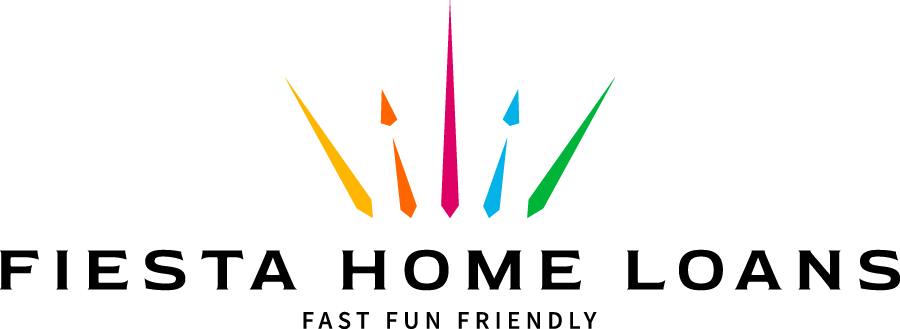When it comes to buying a home, one of the biggest hurdles for many prospective homeowners is the down payment. There are several misconceptions surrounding this initial financial requirement that can often deter potential buyers or lead to confusion. Let’s break down some of these myths and set the record straight.
Myth #1: You Need a 20% Down Payment to Buy a Home
One of the most enduring myths about down payments is the belief that you need to put down 20% of the home’s purchase price to secure a mortgage. While this was once considered the standard to avoid private mortgage insurance (PMI) and to show financial stability, the landscape of home financing has evolved significantly.
Understanding the 20% Down Payment Myth
- Historical Context: Traditionally, a 20% down payment was seen as a way to demonstrate financial prudence and lower the lender’s risk. By putting down a substantial amount, buyers were less likely to default on their loan, and lenders felt more secure.
- Modern Alternatives: Today, many lenders offer mortgage options with much lower down payment requirements. For example, FHA (Federal Housing Administration) loans allow for down payments as low as 3.5%, while VA (Veterans Affairs) loans and USDA (United States Department of Agriculture) loans may require no down payment at all for eligible borrowers. Conventional loans also offer programs where you can put down as little as 3% to 5%.
- Impact on PMI: While a 20% down payment typically allows buyers to avoid PMI, many low down payment loans include PMI as part of the mortgage terms. PMI protects the lender in case of default but can be removed once you build sufficient equity in the home.
- Affordability and Accessibility: With the flexibility of lower down payment options, homeownership is more accessible to a broader range of buyers. This can be particularly helpful for first-time buyers or those who have not yet had the opportunity to save a significant amount.
- Financial Planning: It’s important for buyers to balance their down payment with other financial considerations. Putting down less than 20% might result in higher monthly payments or additional costs like PMI, but it can also allow buyers to retain more of their savings for other expenses, such as closing costs or home improvements.
Myth #2: A Higher Down Payment Guarantees Better Mortgage Terms
Another common misconception is that a larger down payment automatically translates to better mortgage terms. While a larger down payment can indeed be advantageous, it is not the sole determinant of your mortgage conditions.
Exploring the Role of Down Payment in Mortgage Terms
Down Payment Benefits
A higher down payment can potentially lead to better loan terms, such as a lower interest rate or reduced PMI. This is because a larger down payment reduces the lender’s risk, and thus, they may offer more favorable terms in exchange for the lower risk.
Other Key Factors
- Credit Score: Your credit score is one of the most significant factors in determining your mortgage rate and terms. A higher credit score often leads to lower interest rates and better loan conditions, regardless of the size of your down payment.
- Income Stability: Lenders assess your income stability to ensure you can make regular mortgage payments. A steady and reliable income can positively influence your mortgage terms.
- Debt-to-Income Ratio (DTI): This ratio measures your monthly debt payments compared to your gross monthly income. A lower DTI indicates a better ability to manage additional debt, which can improve your loan terms.
- Financial Profile: Overall financial health, including savings, investments, and existing debts, is considered. A strong financial profile can help you secure more favorable terms even if your down payment isn’t the largest.
Negotiating Terms: While a larger down payment can provide leverage, it’s also important to shop around and negotiate with lenders. Different lenders have various criteria and may offer competitive terms based on your overall financial profile.
Balancing Act: Buyers should carefully consider their financial situation when deciding on a down payment. While a larger down payment can have benefits, it’s essential to weigh these benefits against other financial needs and goals.
Long-Term Considerations: Think about how your down payment and mortgage terms fit into your long-term financial plans. Sometimes, making a smaller down payment might be more strategic if it allows you to maintain an emergency fund or invest in other areas.
Myth #3: Down Payment Assistance Programs Are Only for First-Time Buyers
Many prospective homeowners believe that down payment assistance programs are exclusively for first-time buyers. This misconception can prevent eligible buyers from taking advantage of valuable resources that could ease the financial burden of purchasing a home.
Understanding Down Payment Assistance Programs
Eligibility Beyond First-Time Buyers
- General Assistance: While many down payment assistance programs are targeted towards first-time buyers, there are numerous programs available for repeat buyers as well. These programs are designed to support a wide range of buyers, including those purchasing a home for the second or third time.
- Income and Location-Based Programs: Some programs are based on income limits or geographic location rather than first-time buyer status. For example, certain local or state-specific programs may be available to buyers who meet specific income criteria or are purchasing in designated areas.
Types of Assistance
- Grants: These are funds that do not need to be repaid. They can cover part or all of your down payment, reducing the upfront financial burden.
- Forgivable Loans: These loans are typically provided at low or zero interest rates and are forgiven over time, often if the borrower stays in the home for a specified period.
- Deferred Loans: These loans don’t require payments until the borrower sells the home or refinances the mortgage. They help bridge the gap for down payment needs without immediate financial strain.
- Tax Credits: Some programs offer tax credits that can reduce your tax liability, indirectly assisting with the down payment by increasing your overall financial resources.
Application Process
- Research and Application: The process for applying for down payment assistance can vary. It often involves researching available programs, meeting eligibility criteria, and submitting an application. It’s beneficial to work with a mortgage professional who can guide you through this process and help identify programs for which you might qualify.
- Documentation: Be prepared to provide documentation of income, employment, and other financial information as part of the application process. Each program may have different requirements and documentation needs.
Local and National Programs
- Local Programs: Many cities and counties offer down payment assistance programs tailored to local needs. Researching these programs can provide options that are specifically suited to your area.
- National Programs: Some national programs, like those offered by the Federal Housing Administration (FHA) or the U.S. Department of Veterans Affairs (VA), may also provide assistance to various types of buyers beyond just first-time purchasers.
Myth #4: It’s Better to Use All Your Savings for a Larger Down Payment
Another prevalent myth is that it’s always better to use all your savings for a larger down payment to reduce your mortgage and avoid higher monthly payments. While a larger down payment can indeed have advantages, it’s essential to consider the full picture of your financial health.
Balancing Your Down Payment with Financial Stability
Benefits of a Larger Down Payment
- Lower Monthly Payments: A larger down payment means borrowing less, which can lead to lower monthly mortgage payments and less interest paid over the life of the loan.
- Avoid PMI: A 20% down payment typically allows you to avoid private mortgage insurance (PMI), which can add to your monthly costs.
Risks of Depleting Savings
- Emergency Funds: Using all your savings for a down payment can leave you with little to no emergency funds. It’s crucial to have a financial cushion for unexpected expenses such as medical emergencies, home repairs, or job loss.
- Long-Term Financial Goals: Depleting your savings might affect your ability to save for other important financial goals, such as retirement, education, or investments.
Consulting a Financial Advisor
- Professional Guidance: A financial advisor can help you assess your overall financial situation and determine the optimal down payment amount. They can provide insights into how different down payment amounts impact your financial health and long-term goals.
- Personalized Plan: An advisor can help you create a balanced financial plan that incorporates a down payment strategy while ensuring you retain adequate savings and meet other financial objectives.
Alternative Approaches
- Save and Invest: Instead of using all your savings, consider making a down payment that allows you to maintain a healthy savings balance. This approach can help you stay financially secure while still benefiting from a reasonable down payment.
- Budgeting for Additional Costs: Remember that buying a home involves other costs beyond the down payment, such as closing costs, moving expenses, and initial home maintenance. Ensure you budget for these additional expenses to avoid financial strain.
Myth #5: Down Payments Must Come Solely from Personal Savings
A widespread belief is that down payments must be funded exclusively from personal savings. While personal savings are a common source of down payments, there are multiple other avenues to explore that can help make homeownership more attainable.
Exploring Alternative Sources for Down Payments
Gifts from Family Members
- Gift Funds: Many homebuyers receive down payment assistance in the form of monetary gifts from family members or friends. These funds can be used to cover all or part of the down payment. However, it’s important to document these gifts properly.
- Documentation Requirements: Lenders typically require a gift letter to verify that the funds are indeed a gift and not a loan. This letter should include the donor’s information, the amount of the gift, and a statement affirming that the money does not need to be repaid.
Down Payment Grants and Assistance Programs
- Local and National Programs: Various programs are designed to assist homebuyers with down payments. These can include government grants, non-profit organizations, and community programs that provide financial aid to cover down payment costs.
- Eligibility and Application: Eligibility for these programs can depend on factors like income, location, or first-time buyer status. Researching and applying for these programs can significantly reduce the financial burden of buying a home.
Employer Assistance Programs
- Employer Benefits: Some employers offer down payment assistance as part of their employee benefits package. This can come in the form of grants, loans, or matching contributions towards the down payment.
- Understanding Benefits: If your employer offers such a program, review the terms and conditions carefully to understand how it can be utilized and any requirements you must meet.
Retirement Account Withdrawals
- 401(k) Loans or Withdrawals: In some cases, you may be able to use funds from your retirement account for a down payment. For instance, a 401(k) loan allows you to borrow against your retirement savings, though it’s important to consider the potential impact on your future retirement funds.
- IRA Withdrawals: First-time homebuyers can withdraw up to $10,000 from an IRA without facing early withdrawal penalties, though income taxes may apply. This option can be used to supplement your down payment.
Seller Contributions
Negotiated Contributions: In some cases, sellers may be willing to contribute to the buyer’s closing costs or down payment as part of the negotiation process. This can be particularly useful in competitive markets or when buyers need extra assistance.
Documentation and Compliance
Full Disclosure: Regardless of the source, it’s crucial to disclose and document the origin of your down payment funds. Lenders require this information to ensure that all funds are legitimate and comply with underwriting guidelines.
Myth #6: You Can’t Buy a Home with Less Than Perfect Credit and a Small Down Payment
Many potential homebuyers believe that achieving homeownership requires both a high credit score and a substantial down payment. However, there are several financing options available for those with less-than-perfect credit and smaller down payments.
Understanding Mortgage Options for Less-Than-Perfect Credit and Smaller Down Payments
FHA Loans
- Eligibility: FHA (Federal Housing Administration) loans are designed to assist borrowers with lower credit scores and smaller down payments. These loans require a minimum down payment of just 3.5% and are available to both first-time and repeat buyers.
- Credit Score Requirements: FHA loans are more lenient with credit score requirements, often accepting scores as low as 580. For those with lower credit scores, the minimum down payment requirement may increase to 10%.
VA Loans
- Benefits: VA (Veterans Affairs) loans are available to eligible veterans, active-duty service members, and certain members of the National Guard and Reserves. VA loans often require no down payment and have more flexible credit score requirements.
- Eligibility: Eligibility for VA loans is based on service history, and these loans also offer competitive interest rates and do not require PMI.
USDA Loans
- Rural Development: USDA (United States Department of Agriculture) loans are aimed at homebuyers in eligible rural or suburban areas. These loans offer 100% financing with no down payment required, though they do have specific income and location requirements.
- Credit Score Flexibility: USDA loans also have more flexible credit score requirements compared to conventional loans.
Conventional Loans with Low Down Payment
- Fannie Mae and Freddie Mac: Conventional loans offered by Fannie Mae and Freddie Mac can require as little as 3% down. These loans typically have stricter credit score requirements but are available for those with less-than-perfect credit.
- Private Mortgage Insurance (PMI): If the down payment is less than 20%, PMI will likely be required, which can add to monthly payments but allows buyers to enter the housing market sooner.
Local and State Programs
Special Programs: Many states and local governments offer programs that provide assistance to buyers with lower credit scores and down payments. These programs can include reduced-interest loans or grants to help bridge the gap.
Improving Your Credit Score
Credit Repair: While not always necessary, working on improving your credit score can open up better loan options and terms. Simple steps like paying down debt, making timely payments, and correcting any inaccuracies on your credit report can have a positive impact.
Conclusion
Understanding the truths behind these down payment myths can help you make more informed decisions as you pursue homeownership. At Fiesta Home Loans, we’re dedicated to helping you navigate the mortgage process with ease. Whether you’re exploring alternative down payment sources or finding financing options for less-than-perfect credit, our team is here to provide personalized advice and support. Contact us today to discuss your home financing options and take the next step toward achieving your homeownership goals.

Meet Alfredo Acevedo: Your Guide to Financial Clarity
Alfredo Acevedo shares his expertise and passion for guiding clients through the mortgage process with confidence. With years of experience, he’s dedicated to simplifying home loans and empowering borrowers with informed decisions, whether you’re a first-time buyer or refinancing.
Like this article? Spread the word!
Related Posts
April 15, 2025
5 Ways to Speed Up Your Home Loan Approval Process: Fast Financing Tips from Fiesta Home Loans
Discover 5 expert tips to speed up your home loan approval with Fiesta Home Loans. Fast,…
February 19, 2025
First-Time Homebuyer’s Guide: Everything You Need to Know Before Buying a Home
Buying your first home? This step-by-step guide covers the home loan process, common…
January 15, 2025
Spring into Homeownership: Fast, Fun, and Friendly Mortgages with Fiesta Home Loans
Discover how Fiesta Home Loans makes home financing fast, fun, and friendly this spring!…






